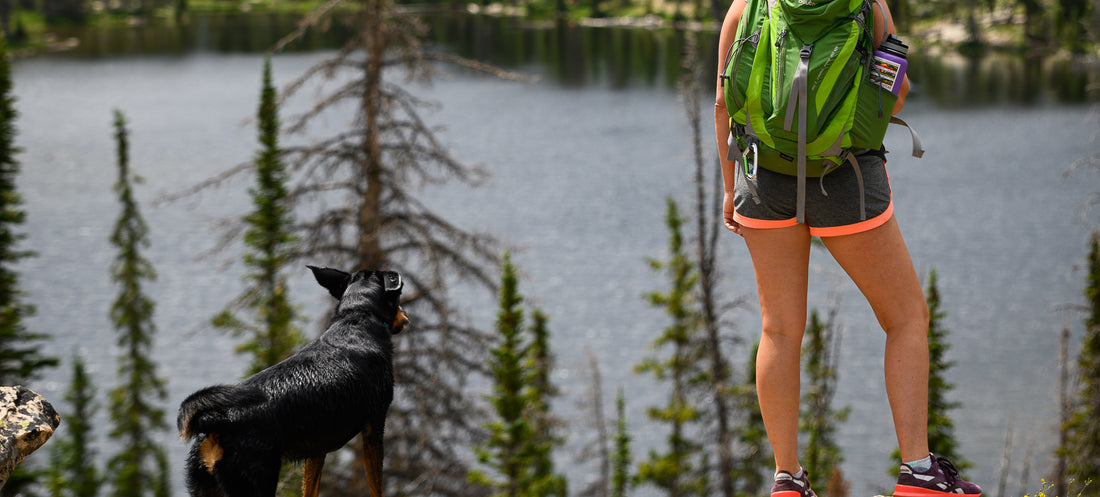
5 Summer Heat Dog Safety Tips
Share
We love to make the most of the long summer days. Our pup’s enthusiasm for the trails doesn’t wither in the heat - she’s ready to go anywhere, any time! However, hot summer days require some adjustments to the hiking routine to keep our furry companions safe and healthy.
Most dog breeds can tolerate a summer hike, provided they have adequate water and the opportunity to rest and cool off in the shade when necessary. Check with your vet prior to setting out in the heat to make sure your dog is up for the trek and keep the following tips in mind.
1 - Be prepared
Prevention and preparedness will go a long way toward ensuring a safe adventure for you and your dog. Plan to go in the early morning or late evening, when temperatures are lower than 85 degrees. Choose a route with plenty of opportunities to stop and rest in shaded areas. Or better yet, hike next to a river, stream or near a lake so your pup can take a dip to cool down. You should also know where your after hours or emergency vet is located and have their number - as well as your primary vet’s number - saved in your phone for quick access.
2 - Hydration is key
Have plenty of cold water available for both you and your dog to drink. Also keep a few gallons of fresh water and a towel in your vehicle. If your dog gets overheated, you can soak the towel to give your dog a cool place to lay down or pour a gallon or two of lukewarm water over his/her back to help with cooling. Never wrap your dog in a wet towel - this holds in body heat and makes it harder to cool down.
3 - Protect your dog from burns
Dogs are not immune to sunburn. A doggy sunblock can be applied to susceptible areas to prevent burns and blisters and reduce the risk of skin cancer in later years. Hot surfaces (such as asphalt or rocky terrain) can burn the pads of their paws. If the surface is too hot for your hand, it’s too hot for paws and it’s a good sign that your pup should stay indoors until the temperature drops. Booties can provide some protection from hot or rough terrain. However, dogs release heat through their paw pads to cool down, so booties should be worn sparingly to reduce risk of overheating.
4 - Carry first aid supplies with you
Our Dog First Aid kit has a number of items to assist with first aid care while hiking, including an instant cold pack. Consider carrying a small bottle of rubbing alcohol as well. This can be poured over your dog's feet to help with fast cooling through one of the places that regulates a dog’s body temperature. Check carefully for foot/paw injuries and be very cautious to avoid using rubbing alcohol on injured areas.
5 - Know the signs and pay attention to your dog
Be familiar with your dog's normal behavior and know the early signs of heat exhaustion and heat stroke. If you notice signs of overheating, immediately take steps to help your dog cool down.
The following symptoms could be signs of heat exhaustion: excessive drooling, heavy panting, weakness and/or slowing down, trying to pee with little or no liquid coming out. The dog may become less responsive to commands and may appear to walk around aimlessly.
Signs of heat stroke may include: excessive drooling, eyes glazing over, rapid heart rate, dizziness, an apparent lack of coordination, lethargy, collapsing, convulsions, vomiting or diarrhea, dark/black tar like stool. Their gums or tongue can turn a blue or bright red color. They may even lose consciousness. This is an emergency situation and they need to see a vet as quickly as you can (safely) transport them there. Take whatever immediate steps you can to cool them down and notify your vet that you’re on the way.
And finally...
Hydrate, hydrate, hydrate! This is a repeat of #2, but it's worth mentioning again.
Happy adventuring!
